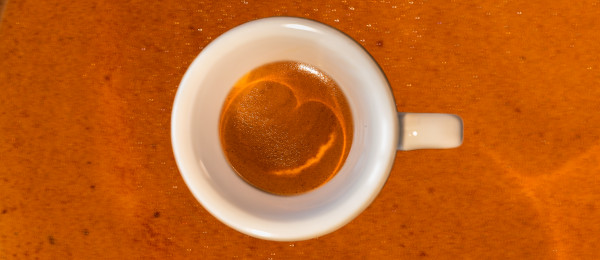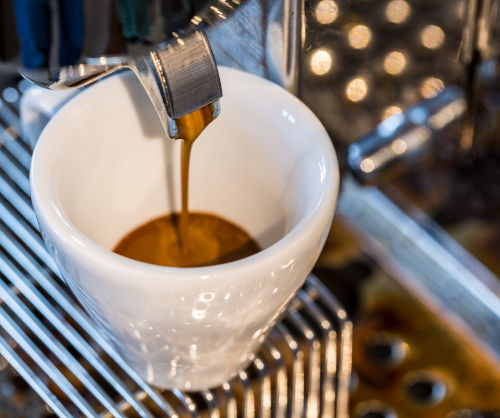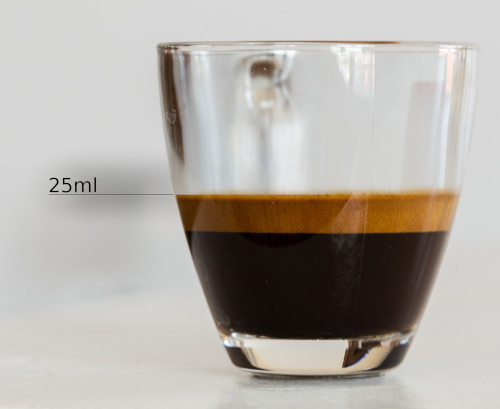What is an Espresso? And what distinguishes an Italian Espresso? Why producing a definition that specifies the extraction characteristics is fundamentally important?
These are among the first questions that our guests often ask us during the presentations and product tastings at our coffee room at the Munich General Market. The common definition is simple: espresso is a drink obtained by percolating high pressure hot water on a mixture of toasted and ground seeds of Coffea arabica and Coffea canephora (commonly called Coffea robusta).
Behind the definition of Italian Espresso, there is the concept of the Italian word “Espresso”: something that is quickly created for the occasion upon express and sudden request. Once prepared, the Espresso must therefore be drunk immediately, before the cream shrinks and collapses and the surface of the coffee drink becomes free.

This concept and definition rightly satisfies the curiosity and expectations of the majority of lovers of this extraordinary drink and, also (unfortunately in this case), of many professionals.
Espresso enthusiasts, the most prepared and curious professionals need something more. They require a more precise definition that can help them to fully enjoy the drink and to extract with repeatable results an Espresso that has, in the cup and on the palate, the characteristics they love.
Over time, many excellent authors and various institutional bodies have studied and defined the Italian Espresso. Interestingly, there is no distinct definition. Thanks also to the evolution of technology, the recipes or formulas for the Italian Espresso have changed and even today there is no particular standard.
In 1995, with the excellent publication "Espresso Coffee - The Science of Quality", Andrea Illy and Rinantonio Viani offered the following definition of the Italian Espresso:
The Italian Espresso is a small cup of concentrated brew prepared on request by extraction of ground roasted coffee beans, with hot water under pressure for a distinct short time:
Ground coffee portion: 6,5 g ± 1,5 g
Water Temperature: 90°C ± 5°C
Water Pressure: 9 bar ± 2 bar
Percolation time: 30 s ± 5 s
In 2003, Luigi Odello, chief curator of the "Espresso Italiano Specialist" edition of the “Istituto Nazionale Espresso Italiano”, gave the following definition and specific conditions.
The Certified Italian Espresso is obtained from a blend of roasted coffee beans of different origins, ground at the time of preparation and treated in the machine so that the drink has a certain organoleptic profile, described and checked according to the scientific rules of sensory analysis.
Ground coffee portion: 7 g ± 0,5 g
Water Temperature: 88ºC ± 2ºC
Temperature of the coffee in the cup: 67ºC ± 3ºC
Water Pressure: 9 bar ± 1 bar
Percolation time: 25 s ± 2,5 s
Millilitres in cup (including cream): 25 ml ± 2,5 ml

Aside from the differences in numbers between these two standard definitions, it should be carefully noted the valuable addition of two conditions: the standard temperature of the Espresso in the cup and the necessary quantity in the cup.
If 40ml of delicious beverage in 1995 could be considered an Italian Espresso, in 2003 this is no longer true. In practice, the interpretation is other. The “Istituto Nazionale Espresso Italiano” has clearly improved the definition of the parameters to rule out possible misunderstandings and standardize the preparation on the one hand, on the other to obtain the maximum sensory result from the extraction.
In 2017, the University of Coffee (Trieste) conveniently expressed the following formula to properly obtain a perfect Italian Espresso:
Ground coffee portion: 7 g
Water Temperature: 92ºC
Water Pressure: 9 bar ± 1 bar
Time of extraction: 30 s
Millilitres in cup (including cream): 25 ml
But it is not over, there are even now many considerations and currents of thought among the experts and we are convinced that there will nevertheless be some minor changes.
For example, in recent times, the pre-infusion stage of the Espresso extraction is gaining in importance: something that is undefined in the definitions and "official" recipes we have indeed presented, yet. In some cases the pre-infusion stage is conveniently forgotten when it comes to percolation time, in others it is completely enveloped in the extraction time.
When we carefully present our successful products to our welcome guests, the specific recipe we scrupulously follow to guarantee an excellent and repeatable sensorial result of our Italian Espresso is as follows:



Comments (0)